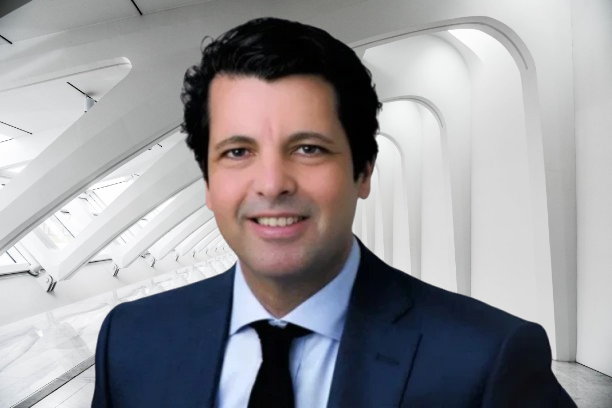Understanding the Passages Malibu Logo: A Symbol of Recovery and Renewal
The Passages Malibu logo represents more than just a luxury rehabilitation center in California; it has become a symbol of hope, recovery, and transformation for those struggling with addiction. Known for its holistic, non-12-step approach to addiction treatment, Passages Malibu has built a reputable brand, and its logo reflects its core principles and values. This article delves into the design elements, symbolism, and impact of the Passages Malibu logo.
1. The Design of the Passages Malibu Logo
The Passages Malibu logo features a serene, simplistic design that embodies the center’s calm and peaceful environment. With a combination of soft colors, often including shades of blue or green, the logo resonates with the idea of renewal and recovery. These colors are associated with tranquility, growth, and mental clarity—key elements in the addiction recovery process. The logo is minimalistic yet powerful, ensuring that its message of healing and hope is both clear and memorable.
Key Elements of the Logo
One of the most recognizable parts of the Passages Malibu logo is its choice of font and iconography. The logo typically includes a clean, elegant typeface that reflects the center’s upscale and welcoming approach. This design choice speaks to Passages Malibu’s emphasis on providing a comfortable, non-institutional experience for its clients.
In some variations of the logo, there is also imagery related to nature, such as waves or leaves, symbolizing the journey toward recovery. Nature-based symbols in logos are common among wellness brands as they signify growth, renewal, and the journey back to a healthy, balanced life. These elements serve as visual reminders of the center’s focus on holistic healing.
2. Symbolism in the Passages Malibu Logo
The Passages Malibu logo holds significant symbolic value. Each design choice—color, font, and icon—was made to inspire feelings of calm and trust. The logo’s color palette, often dominated by shades of blue and green, evokes a sense of serenity and renewal, much like the calming effects of the ocean and nature itself. This is especially fitting given that Passages Malibu is located near the Pacific Ocean, a feature that offers clients the opportunity to connect with nature as part of their recovery journey.
The Power of Color Psychology
Blue and green are colors often associated with mental health and wellness, especially in the context of addiction recovery. Blue represents stability, peace, and calm, while green symbolizes growth, healing, and harmony with nature. By using these colors, the Passages Malibu logo subtly communicates that the center provides a safe, nurturing environment where individuals can focus on personal growth and recovery.
3. Reflecting the Philosophy of Passages Malibu
Passages Malibu is known for its non-12-step approach to addiction recovery, focusing on identifying and treating the underlying causes of addiction. This philosophy contrasts with traditional methods, as it encourages individuals to understand the root causes of their addiction rather than labeling themselves as “addicts.” The simplicity and elegance of the logo reflect this modern, non-judgmental approach.
The logo’s calm and inviting design also underscores the importance of personal transformation in the recovery process. Passages Malibu advocates for a holistic view, treating the mind, body, and soul, which aligns with the symbolic elements of renewal and growth embedded within the logo. For clients and families seeking treatment, the logo serves as a reassurance that recovery is possible through understanding, healing, and self-discovery.
4. Brand Identity and Recognition
As one of the most well-known luxury rehabilitation centers, Passages Malibu has carefully crafted its brand identity, and the logo plays a vital role in this. The logo is instantly recognizable and has become synonymous with premium, personalized care. It appeals not only to individuals struggling with addiction but also to their families, who find comfort in Passages Malibu’s refined, dignified approach to recovery.
The Passages Malibu logo helps differentiate it from other rehab centers by projecting an image of high-quality care and a luxurious experience. This visual branding is especially important for a center that offers an alternative to conventional recovery methods. The logo is a visual assurance of the center’s commitment to providing a safe, judgment-free space focused on genuine healing.
5. The Impact of the Passages Malibu Logo on Marketing and Client Trust
In today’s digital age, logos play a crucial role in building trust and attracting clients. The Passages Malibu log0 is used across various marketing platforms, from its website and social media to advertisements and brochures. Its calming and reassuring design helps potential clients feel at ease, which is essential for a facility that deals with sensitive issues like addiction.
Marketing materials featuring the logo serve as gentle invitations for those considering treatment, reminding them that help is available. The logo reinforces Passages Malibu’s brand message, encouraging individuals to seek support from a place that prioritizes holistic healing and personal growth.
Conclusion
The Passages Malibu logo is more than a simple design; it is a visual representation of the center’s philosophy and dedication to recovery. With its calming colors, minimalist design, and nature-inspired elements, the logo communicates an environment of peace, hope, and holistic healing. This symbolic representation makes the logo a key element of Passages Malibu’s brand identity, assuring clients and their loved ones of the high-quality, compassionate care they will receive.
By focusing on elements that promote calmness, trust, and growth, the Passages Malibu logo has successfully become a recognizable symbol in the world of addiction recovery, resonating with those who are seeking a transformative, supportive path to wellness.










